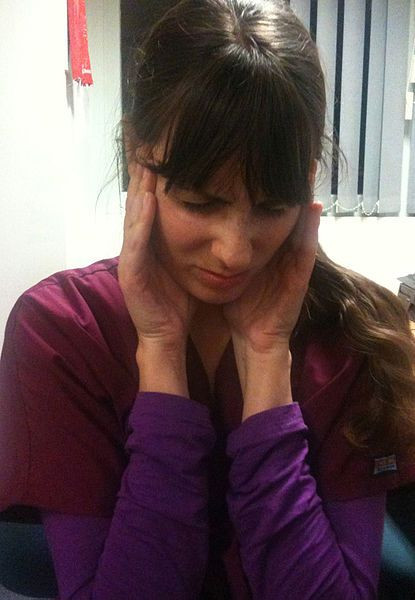Migraines Affect Men And Women's Brains Differently: Is Addiction In Men Equal To Headaches In Women?

Harvard researcher Nasim Maleki’s well-known study, published in the journal Brain last year, found that men and women suffer migraines differently. At the recent 2013 International Headache Congress held in Boston, Maleki introduced the results from her newest study, which found that the posterior insula region in the brains of migraine sufferers did not thin with age. In fact, the duration of the disease related to how thin or thick the region appeared.
This unusual brain development, Maleki and her co-researchers from Boston Children’s Hospital wrote in a paper presented at the conference, “may either reflect adaptive or maladaptive responses to migraine.”
Effects of Aging on the Brain
The insula region of the brain is believed to provide an interface between feelings, cognition, and action, though the posterior region may only be part of that process. “The posterior insula is an integrative association cortical region for multisensory-motor processing,” wrote the authors.
In the past, imaging studies had indicated a significant change in the posterior insula among female migraineurs alone. In fact, women sufferers exhibited a thicker posterior insula compared with male sufferers and the healthy 'control' subjects of both sexes. It was also known that, with normal aging, the majority of the cortex regions — the outermost layer of the brain, which rests atop the subcortical regions — become progressively thinner. Yet, a review of recent literature showed a number of cortical regions were altered in migraine patients.
Considering the information at hand, Maleki and her co-researchers wondered, does age affect the brains of migraineurs differently or in abnormal ways?
To investigate this matter, the researchers scanned the brains of 92 female migraine patients. To be included in the study, the migraine patients had to have suffered the terrible headaches for more than three years and had to be classified as ‘episodic,’ not chronic, migraineurs. (Chronic migraine occurs 15 or more days a month with headaches lasting four hours or longer; episodic migraine occurs infrequently.) The magnetic resonance imaging (MRI) scans were processed in such a way to enable reconstruction of cortical surfaces and detect sub-millimeter differences in cortical thickness.
What did the researchers find? While cortical thinning by age had occurred in the healthy participants, among those with migraines, the researchers found no evidence of thinning in the posterior insula. The brains of migraine sufferers, the researchers concluded, may be adapting in response to pain.
Although this result was most definitely new, the study method was not. In fact, Maleki and her co-researchers had used brain imaging techniques to great benefit in the past.
Migraines Teach Us about Sex Differences
Wanting to investigate potential causes for gender-based differences in migraines — for one, these headaches are twice as common in women as in men — Maleki and her team used MRI scans in a study conducted last year to search for dissimilarities in brain structure. Soon enough, they discovered that female sufferers had thicker posterior insula and precuneus cortices compared with both the men migraineurs and the healthy participants. Next, the team of researchers subjected the hands of participants’ to blasts of heat — only enough to cause slight pain — while they compared brain activity through the scans.
Again, the researchers discovered sex differences in how the brains of participants responded. Among the women with migraines, the thicker areas of their brain (posterior insula and precuneus cortices) “talk[ed] to each other and work[ed] together to respond to pain" in a pattern not seen in the men, Maleki told Science Now. Among the men, those with migraines had a stronger reaction to the heat pain in one area — the nucleus accumbens.
“Interestingly, as much as pain syndromes are more prevalent in women and disproportionate relative to men, in addiction it is the opposite,” Maleki told Science Now. “Men are more likely to develop addictions, and the prevalence is higher in men. So, is the reward circuitry somehow involved in migraine pathophysiology in men? Are there overlaps between pain pathways and reward pathways?” Maleki and other researchers have not yet found the answers, yet with each new study they come closer to unveiling the brain's many mysteries.
Sources: Maleki N, Barmettler G, Becerra L, et al. Posterior Insula Does Not Age in Migrainous Women. Paper presented at the International Headache Congress. 2013.
Maleki N, Becerra L, Brawn J, et al. Her versus his migraine: multiple sex differences in brain function and structure. Brain. 2012.



























